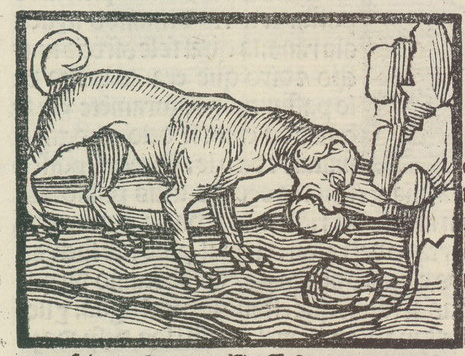Sirius: A Fantasy of Love and Discord
by Olaf Stapledon.
Introduction by Graham Sleight.
Gollancz, 2011 (1944).
In the 1920s Cambridge scientist Thomas Trelone attempts to increase the capabilities of the human mind by experimenting first with dogs.
By injecting hormones in pregnant bitches he produces some super-intelligent sheepdogs with large capacity brains; but it is only with a predominantly Alsatian puppy called Sirius (after the dog star) that he manages to breed an individual capable of human mental processes and feelings.
Unlike normal dogs Sirius ages and matures at the rate corresponding to that of humans and is even just able to form intelligible speech. But here’s the conundrum: what kind of being is this, and how should one treat it?

By presenting his work as a fiction the author manages to raise big philosophical questions around what it means to be human as well as trying to get the reader to gauge what their emotional response should be. It’s to Stapledon’s credit that he largely persuades us to invest in Sirius as a credible character. We see the puppy, brought up by Trelone’s own family in a Welsh farmhouse, treated much the same as Plaxy, a girl close in age to Sirius, to the extent that the two — like siblings or even twins — remain almost inseparable. We learn how Sirius finds the lack of hands frustrating but still manages to engage in everyday human activities. He develops skills as a working dog herding Welsh sheep but is well able to act on his own initiative; he participates willingly in aptitude tests and assessments at Cambridge University; he experiences life in the deprived and disadvantaged East End of London. But the Second World War is looming, and when it comes disaster not only threatens but strikes.
This is an extraordinary realisation. I found it slow at first, and in its almost dry-as-dust way it read like an academic report. But then I was drawn in, intrigued by Sirius’ existential musings, by the innate conflicts between his canine nature and his human brain and by the reactions of the humans who come into contact with him. At times I was reminded of the Houyhnhnms, the intelligent horses of Swift’s savage satire Gulliver’s Travels who make the narrator ashamed of his fellow humans. At other times it felt like a version of Mary Shelley’s Frankenstein, in which the doctor creates a being whom he fails to nurture and understand properly, thereby initiating the countdown to potential tragedies of one kind or another.
In Sirius’ dealings with his foster-sibling Plaxy there was more than a hint of the Red Riding Hood and the Wolf fairytale — but with several twists, one of which is that we view all from Sirius’ perspective. And, if the subtitle (“a fantasy of love and discord”) wasn’t enough of a clue there is also a New Testament echo of Sirius’ reception and treatment; though he brings a message of love and hope the man-dog, being of two natures, is also feared, for we always fear what we do not understand. With a little adjustment the famous Isaiah prophecy — “He is despised and rejected of men; a man of sorrows, and acquainted with grief: and we hid as it were our faces from him; he was despised, and we esteemed him not” — is, though some may see it as blasphemous, a fitting commentary on Sirius’ fate.
It is easy to see many aspects of Stapledon’s own concerns reflected in this novel. His academic career as a philosopher and his pacifist convictions (as a conscientious objector he served as an ambulance-driver in the Great War) inform the story of Sirius as retold by Plaxy’s lover Robert. To give the bald outline of the plot is make the novel appear like a pulp SF story, but Stapledon’s careful assembling of detail and reconstruction of conversations within a logical timeframe conversely give it a very human dimension (a point well made by Graham Sleight in his introduction) and allowed me to invest in and believe in Sirius as a real character. Paradoxically I was less convinced by many of the humans, though Welsh shepherd Llewelyn Pugh I felt came closest to a credible individual.
My appreciation of Sirius was heightened by my several years spent in the Preseli Hills — Welsh upland similar to the Trawsfynydd area and the Rhinog range where Sirius is raised — especially having experienced the seasonal changes and cycles which dominate the working lives of sheep farmers. But viewing human life through the fictional eyes of this more-than-canine sheepdog, especially in the varied contexts of Cambridge, London’s East End and Merseyside during a blitz, is eye-opening in a Swiftian way. It’s enough to make one despair that there will ever be an end to man’s inhumanity to man. Unlike Romulus and Remus brought up by a she-wolf there will be no lasting legacy from this dog raised by humans.
Reading Challenge category: book with non-human characters

